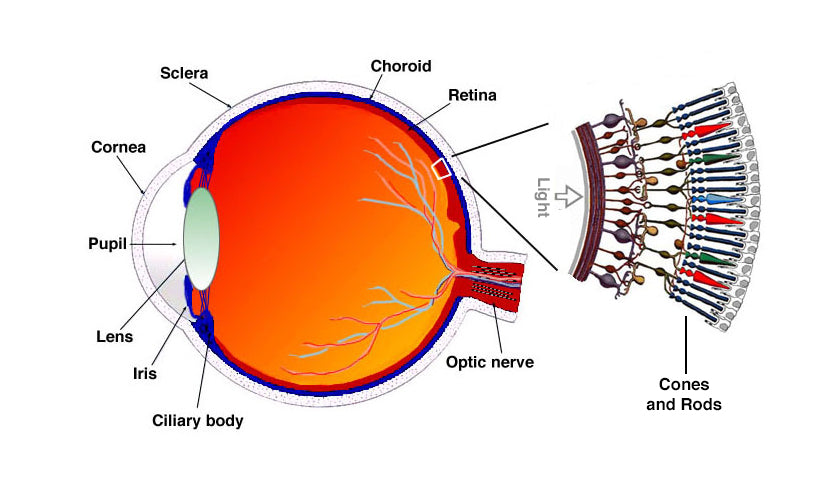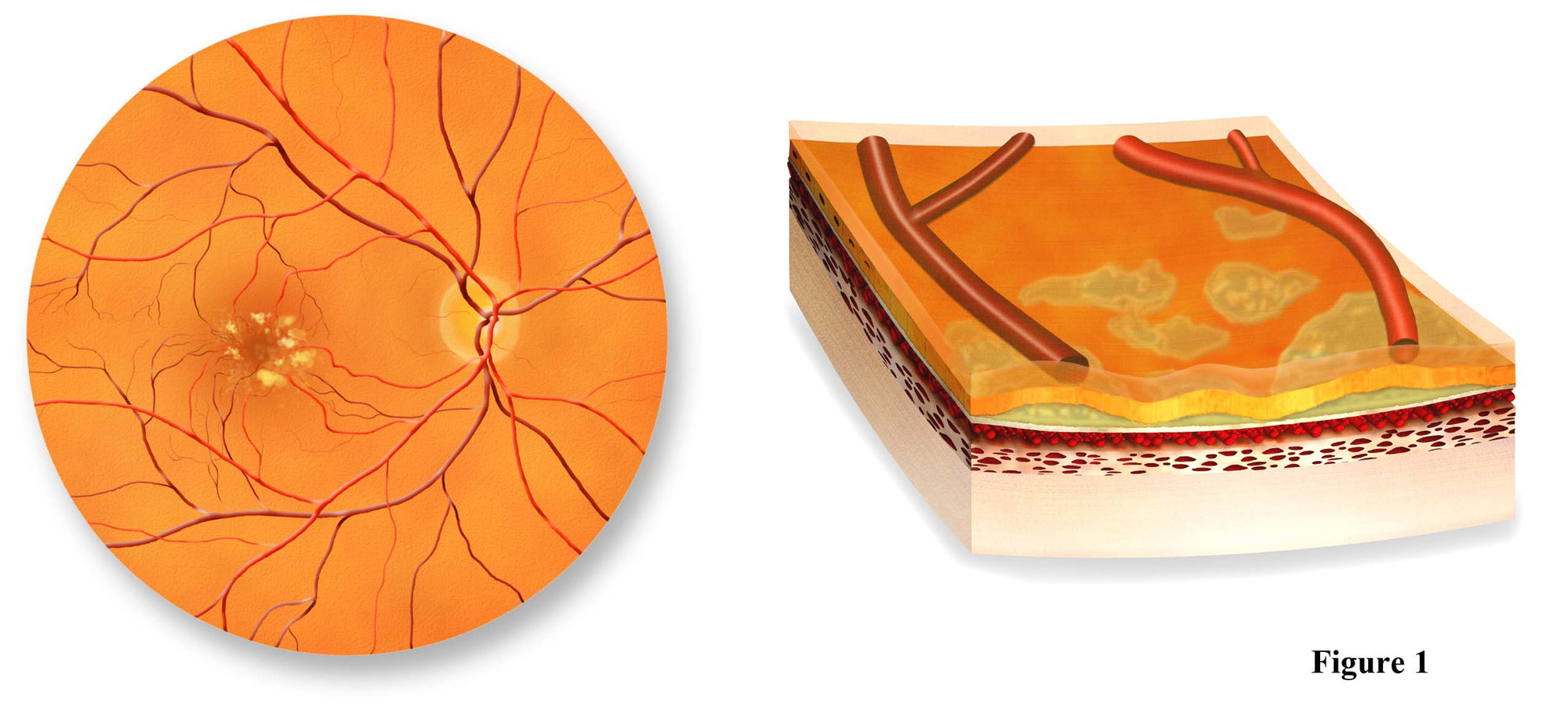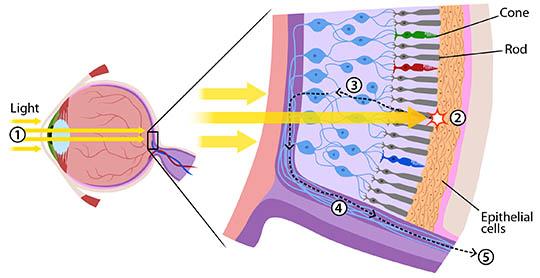Cones: Crystal-Clear, Colorful Vision
Rods and cones are light-sensitive cells found in the eye's retina. When different light wavelengths enter the eye, they are picked up by rods and cones and translated into chemical impulses. These impulses travel through the optic nerve into the brain, where they are assembled into the images, movement and color that make up our vision.

Cones are larger than rods, but far fewer in number. There are 120 million rods in the eye's retina, but only about 6 million cones. Cones are most concentrated at the retina's center, in a region of the macula called the fovea. Here, cones process sight's finer details, enabling sharp, clear "high-resolution" vision.
Cones are also responsible for perceiving colors – specifically, red, green and blue. Since they are less light-sensitive than rods, cones function best in bright light. That explains why colors appear so vibrant in daylight, but fade as it gets darker. When it's fully dark, we can only see in black and white... if we can see anything at all
By the Numbers:
- 6 million cones in the retina
- 64% of these cones respond to red
- 32% respond to green
- 2% respond to blue

Remarkably, our full-spectrum color vision is produced by mixing just three colors! Cone cells' function in eye anatomy and color vision is paralleled by modern technology. For example, the screen you are looking at right now is likely an "RGB" monitor (for red, green, and blue). This type of monitor produces millions of colors from only three wavelengths of light – just like our cones.
Color Deficiency Colorblindness occurs when cones are damaged or simply don't function properly. Eight percent of men are color blind, versus only .5% of women. Maybe that explains why so many men can't seem to match their shirts with their pants!
The Isihara Test is a set of 38 different patterns like the one at left that is used to determine if impaired cones are causing a color vision deficiency. Those with healthy eye cones and full-spectrum vision will discern a number in the image; those who are colorblind will only see a circle full of dots. What do you see?

Did you know? Many believe that dogs only see in black and white. In truth, they simply have a color deficiency. That's because dogs only have two kinds of cones in their eyes: green and blue. Don't feel bad for Fido, though – dogs have 200 million scent glands in their noses, compared to just 50 million in us humans.
Cone Care Damaged cones can also diminish visual acuity. Dry Age-Related Macular Degeneration (AMD) occurs when rods and cones deteriorate and die off. This loss of our delicate photoreceptor cells has been linked with free radical damage and poor nutrient delivery to rods and cones.
As they perform their critical jobs for vision, rods and cones also produce waste matters. In AMD, these waste matters are not cleared away. Lingering waste can further damage cones, accelerating their deterioration. Vision loss ensues.
It's interesting to note that eye-supportive antioxidants lutein and zeaxanthin naturally migrate to the fovea, where cones are most densely clustered. Here, these plant-based carotenoids appear to shield and protect our cones from damage caused by marauding free radicals, toxic waste matters and the blazing blue light spectrum.
When you see vibrant colors in crystal-clear, razor-sharp detail, thank your cones! These sophisticated photoreceptor cells enable us to see our beautiful world in high-resolution color.














